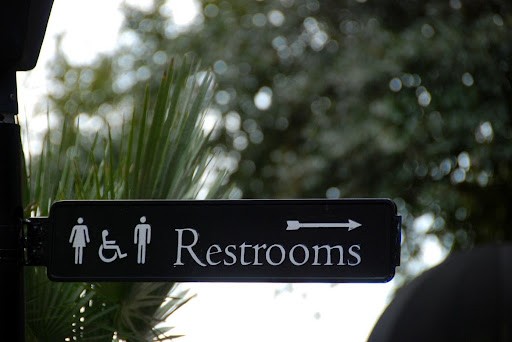If you have ever gotten lost, then you can agree with us that it is one of the most annoying, confusing, and frustrating things ever. So, if you have a building, won’t it be nice if there is a way you could give people navigation directions without being there to ensure they don’t get lost? We bet your answer is a resounding yes especially if you own a commercial building and customer satisfaction is very important to you. You can read this to learn how to keep your customers happy. Interior Wayfinding signage is the perfect solution to prevent people from getting confused and lost in your building. In this article, we will discuss the various types. But let us start by explaining what exactly they are. visit here
Table of Contents
Interior Wayfinding Signage – What does it mean?
Just as the name implies, wayfinding signage is a sign that helps people find the way. Simply put, these signs are there to give direction.
They help people in a building find the way in the easiest way possible, meaning these signs do not have complicated maps or explanations that are too lengthy.
When these signs are there guiding people, it makes it a whole easier for them to find and get to their destination.
This type of sign can either be found outside or inside a building. When it is giving directions inside a building, then it is interior wayfinding signage.
Types
There are 4 types of interior wayfinding signage namely:
- Identification
- Informational
- Regulatory
- Directional
To help you properly understand each type, we will now discuss them individually.
Identification
This is perhaps the most used type. So, we are starting with it as you most likely must have taken note of it at some point or the other.
Signs that fall under this category tell people where they are at. If you are going to a particular place, you most likely will find a sign that would tell you have reached your destination. Identification signs will also let you know that you are yet to arrive at your destination.
For instance, if you want to get to Human Resources, and Sales signs are what you are seeing, you would know you are yet to get to your destination. You would keep moving on until you find a sign that announces Human Resources.
Identification signs should be concise and uncluttered so people won’t spend time wondering what the sign says. Some examples under this category include department markers and door plaques.
2. Informational

Informational interior wayfinding signage gives people information as they navigate. They often refer to not just one area, but the entire facility. They are often placed in places that have broad exposure like building entrances, waiting rooms, lobbies, and so on.
When they are strategically placed and communicate effectively, people won’t have to ask questions like if there is an elevator, what hours the facility is open, or where the bathrooms are.
Again, they have to be understood quickly, hence, symbols and signs used on them should be ones that can be understood by anyone. Some examples of this type include business information like address numbers and operation hours, facilities signage like cafeteria, exits, and bathrooms.
3. Regulatory
These are proactive in that it focuses on liability concerns as well as safety. They also set boundaries like letting people know what is acceptable as well as what isn’t.
Since they are used to reinforce rules and establish safety standards they are often bold and big. They are also devoid of frills, the message is usually concise, clear, and prominent.
There should also be no ambiguity of any sort technology. If a room is off boundaries to non-staff, then the sign should clearly state “Employees Only”. Symbols can be used but would have to be as clear as possible. For instance, if smoking isn’t allowed, a sign showing a canceled cigarette is a clear enough sign. This https://www.collinsdictionary.com/dictionary/english/no-smoking-sign is a dictionary definition of the no-smoking sign.
Some examples of signage that falls under this category include regulations and rules like no firearms, no smoking, access control like employees only, and compliance standards like ADA accessibility.
4. Directional
Last on our list is directional wayfinding signage. These lead people to their destinations. They often guide people through every major step till they get to their destination.
They are usually used in places where traffic flow isn’t clear and junctions. It could be simple, like a plaque strategically placed on every junction either pointing right or left. It can also be more comprehensive like colored lines drawn on floors leading people to their destinations directly.
Continuity is an important aspect here. If someone gets lost between the last and next sign, then the whole point has been ruined. They would have to either backtrack or move forward hoping they get lucky. Anyone lost would typically do either of these two.
Which means the person has gotten lost despite the wayfinding signage. Examples here include junction signage like right to exit and right to the cafeteria, colored lines like yellow for sales and red for marketing, and directory signage like 8th floor, HR.
Conclusion
In this article, we have extensively yet briefly discussed the 4 types of interior wayfinding signage.













